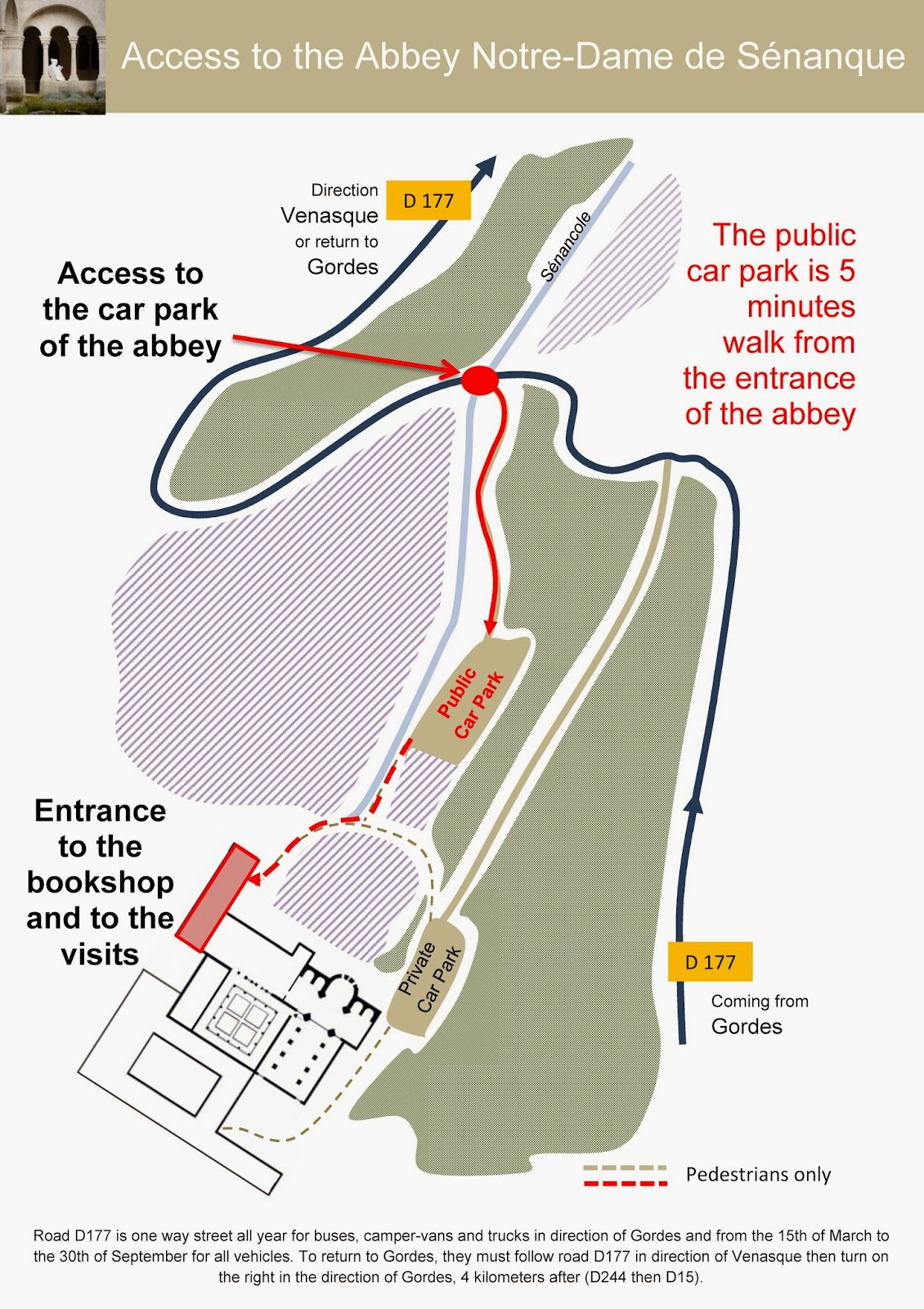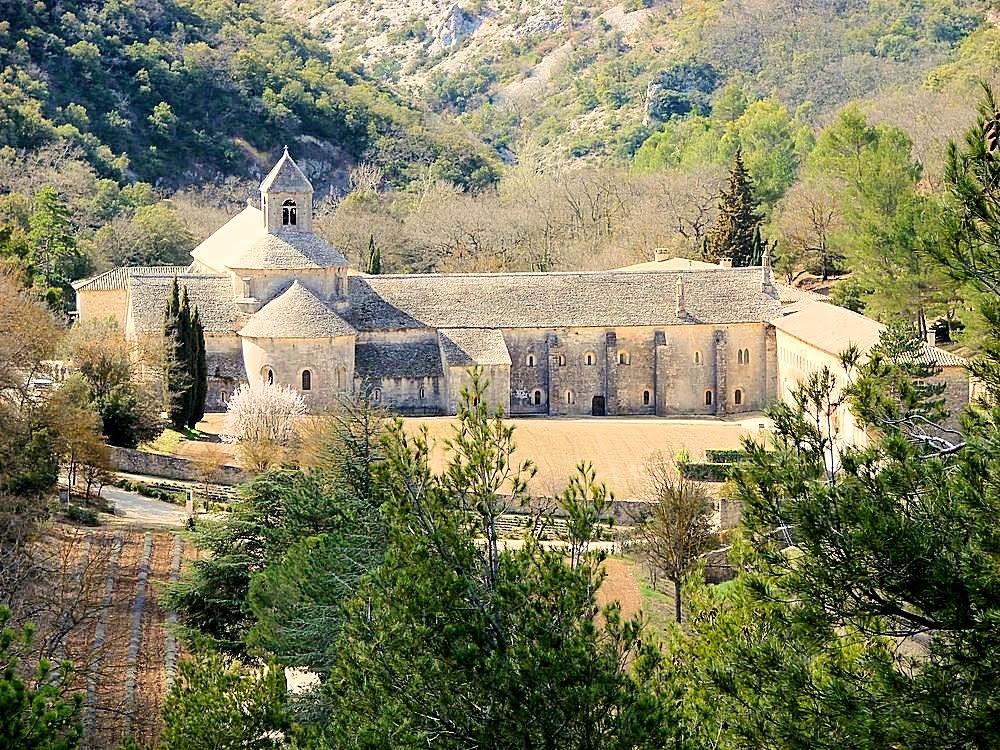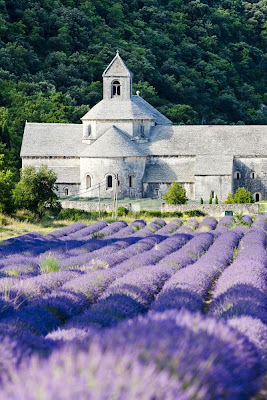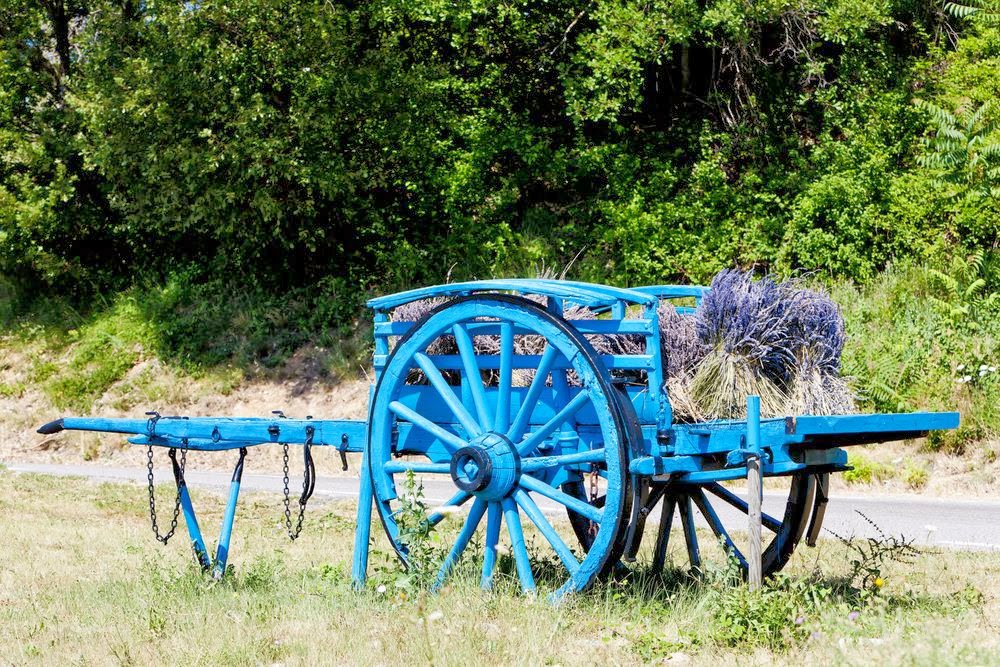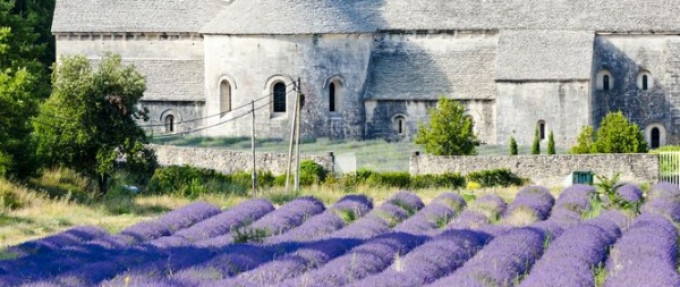
On The Lavender Trail
On The Lavender Trail – Part 1
Part One … From Sablet to Saignon … via L’Abbaye Notre Dame de Senanque
Beginning in Sablet, about two hours of driving will take you through some of the prettiest and sweetest smelling countryside in Provence – passing through historic sites, beautiful towns and postcard scenery.
What better place for the first stop in our visit to Lavender country, than at the Abbaye Notre Dame de Senanque – a Cistercian Monastery surrounded by a sea of purple lavender fields. The first hour from Sablet via the D7, D4 and D177 takes us through vineyards, orchards, interesting towns – and perched hilltop villages with unusual features like the “bories” near the village of Gordes.
Moving down the trail …
… From the Abbaye, a drive through lavender fields along the D2, D4, D900 and D48 takes you to the serene village of Saignon which is built on a ridge of towering rocks that provided a natural barrier against invaders in times gone by.
 |
| An overview of the village of Saignon, looking towards the Romanesque
Church of Notre Dame de Pitie
|
A petit, though very charming village, it was Saignon’s physical location which, as is true with all good real estate, gave it a distinct advantage. Served as a lookout point for invaders – its church bells sounded the alarm to surrounding areas, if the valley was threatened.
 |
| A fortress village with the distinct advantage of being built on a ridge of towering rocks |
Although this village had been inhabited and used as a look out point since mid- Palaeolithic times, some 35,000 years ago it grew in significance during the Medieval era. Within the village, three castles were built by three different lords! This together with the imposing 12th & 14th Century Romanesque Church of Notre Dame are quite remarkable for a village of this size. Its importance was well recognized, as the presence of these early buildings indicates.
 |
| In the center of the village square stands an imposing fountain that dates back to around 1820 |
Today, exploring Saignon on foot, we can enjoy the vestiges of the village’s wealth during times gone by. A fountain in the central village square, designed by a sculptor from nearby Apt, Joseph Noel Sollier, carries two statues symbolizing agriculture and abundance that comes from industry.
 |
| Saignon – Auberge du Presbytere |
| Saignon – Maison du Hauteur |
 |
| Saignon – 16th Century Clock Tower |
It is surrounded by finely crafted stone buildings, while a about one hundred feet from the fountain, stands a 16th Century Clock Tower and the old Castle Chapel which is built using the same rock on which the village stands – all are monuments to Saignon’s impressive history.
… Now, half way on our journey along the Lavender Trail … perhaps you’ve purchased some lavender or some lavender honey. Lavender Ice Cream is always a good use for these delicious ingredients …
Lavender Ice Cream
2 cups Whole Milk
1/4 cup of dried Lavender
1/3 cup Lavender Honey
5 large egg yolks
1/4 cup of sugar
1 cup of heavy cream
Combine milk, lavender and honey in a saucepan and bring to a slow boil. Remove from heat, cover and let steep for approx 5 mins. (at this time, taste the mixture to make sure the lavender flavoring is to your liking, but remember you will be adding eggs and more cream, so balance the flavors but don’t let it get too strong). When the desired strength of flavor is reached, strain the milk and discard the lavender.
Beat egg yolks and sugar in a bowl until very thick and light in color. Return milk to the stove and bring back to a simmer. Add some of the milk to the egg mixture, whisking well to combine. Repeat until approx half the milk mixture is incorporated and the egg mixture is tempered.
Add the egg mixture to the rest of the milk and cook slowly over a low heat, constantly stirring until the mixture is thick enough to coat the back of a spoon. Stir in the heavy cream and remove from heat.
Let the mixture cool in the refrigerator and then freeze in an ice cream maker according to the instructions. Place in an airtight container and place in the freezer to take it from a soft to firmer ice cream.



